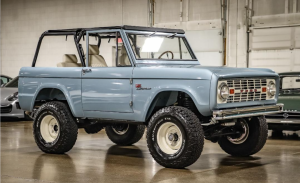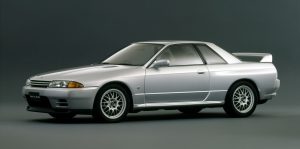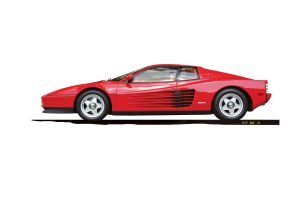Back to the Future (and Around the Globe)
Travel the world—and back in time—with these four iconic cars.
Whether in movies, TV shows, or our own garages growing up, cars have a special way of evoking a sense of time and place for us—and those in the collector space are taking notice.
“For newer, younger collectors now, there’s a sentimental attachment to cars they grew up with in the 70s, 80s and 90s,”
Says Tim Dadik, Vice President, Berkley One Classics Leader. “That’s where the memories are for them.” For many, those were the vehicles they saw on the big screen, ones representing a high level of prestige or luxury—while for others, it was whatever was cruising down the streets of their hometowns, makes and models rooted in the familiarity of yesterday’s upbringing. “So much of it comes down to the generation—what were the cars people really wanted when they were in high school or college but couldn’t afford at the time?” says Marcus Maingot, Vice President, Berkley One Product Management. “Those are the ones they still want to drive today.” The fact that more manufacturers are bringing back cars from that era only heightens today’s tendency towards nostalgia. “These newer cars are becoming highly collectible,” says Kevin Vezina, Berkley One Classics Agency Experience Manager. “That’s where this younger generation is really focusing.”
From an Italian sports car to an American classic, here are four iconic vehicles coming back into prominence now.
America: Ford Bronco
When the Ford Bronco debuted, Ford Vice President Don Frey noted that the company was adding a pony to the stable to join it’s sibling—the Mustang1. And yet, the Bronco would be a breed of its own. Looked to as the world’s first SUV2, it was designed as an off-road vehicle that still evoked a sense of class—an aesthetic to which the company is now returning.

1971 Ford Bronco. Photo by @garagekeptmotor
“If you look at today’s Broncos, they really resemble the Broncos of the mid-70s—they have a slightly smaller body and are a bit boxier,” says Vezina. “Car companies today are beginning to integrate their older designs with new, modern touches—and that’s particularly exciting for those of us who grew up in the 70s and 80s.” And then, Vezina notes, there are those who are looking to older Broncos as restoration projects. “A lot of people are taking original Broncos and lifting these, putting in modern, more powerful engines, and tricking out the interiors—they are super cool vehicles.” Dadik agrees. “I’m seeing the 2024 model driving around, but also plenty of these great, mid-80s, early 90s refurbished Broncos—it really feels like people are reliving their youth.”
Japan: Nissan Skyline
According to the Imported Vehicle Safety Compliance Act, any car 25 years or older can be brought into the U.S. (so long as it passes a series of regulations by the National Highway Traffic Safety Administration)3 —

Nissan Skyline. Photo by @Nissan
and as of January 2021, the 1995 Skyline R33 GT-R passed the test (and in 2014, the R32 GT-R)4. “Because these cars are now 25 years or older, there’s a huge business for shops around the country that specialize in restoring them,” says Maingot. “It’s especially cool for collectors who grew up playing PlayStation’s Gran Turismo and recognize the Skyline and its cultural role at the time.”
Italy: Ferrari Testarossa

1987 Ferrari Testarossa. Photo by iStock
This car landed its own leading role on 80s hit show Miami Vice (a 1986 white version driven by James “Sonny” Crockett)—but in reality, it debuted two years earlier at the Paris Motor Show as successor to the 512 BBi5. The design broke new ground at the time—especially with its long side strakes, a feature that would become known as the model’s most iconic. In its 12-year-run, a period that included two model revisions (from 1984 to 1996), Ferrari released just 10,000 units.6
Germany: Porsche 959
Porsche enthusiasts will remember several notable moments for the manufacturer over the decades, from the 928’s appearance in Risky Business7 to the arrival of the 996, the first 911 with a water-cooled flat six engine.8

Porche 959. Photo by iStock
But perhaps less frequently talked about is the 959, the twin-turbocharged model quick to turn heads when it debuted in 1986 for its revolutionary engineering and design (a feat that prompted the company to equip all turbocharged sportscars with all-wheel drive moving forward).9 Between its high speed (near 320km/h) and incredibly low production (292 in total), it’s a car that still makes waves in the collector space today.10 “This was the original kind of supercar that Porsche made, and it’s becoming super collectible,” notes Maingot. “It was way ahead of its time, and it continues to be special because of that.”
This story appears in One Adventures, Berkley One’s digital magazine celebrating creators, experiences and stories. Read the full issue here.
Berkley One is a Berkley company.



